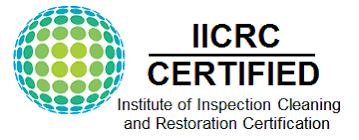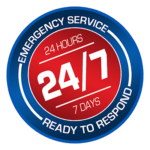Standing water can cause a lot of damage to your house. The damage is more extensive when you have a hardwood floor – they don’t mix. So, if you live in a hurricane-proof or flood-prone locations, you might need to think of ways to prevent water damage.
Flood cleanup and floor restoration take professional skill. However, you can try to minimize the effect on your floors. The best way to deal with water and hardwood floors is to contact Toronto flood cleanup company like Emergency 101. Other than that, you can also check out the following tips to prevent water damage.
#1: Respond Fast
Since water and hardwood floors don’t mix, the more time you take, the more extensive will be the damage. Act fast when you notice flooding or burst pipe in your home. The cellulose fibers of the wood soak up water, making the damage irreparable.
Even when your floors are well polished if you allow the water to stand, it will cause the polish to wear off and harm your hardwood floor. So, make sure you check the water spill on hardwood floor.
#2: Stop The Source
If you have a water spill or a burst pipe, the first thing that you need to do is stop the water source from flooding your house. That way, you can mop up the floor and minimize the damage on the hardwood. If the water keeps seeping in, no matter what you do would be useless.
So, the first time you find a leak, try to get it repaired. And if you have a burst pipe, contact an emergency plumber like Emergency 101, so that they can get it sorted for you. Once you have taken care of the burst pipe or leaking water source, you can proceed to the next step.
#3: Remove Wet Items
If you have any wet items in the room like furniture, electrical appliances or even carpet, get rid of it first. This is because items like carpet and furniture stagnate the water. What’s more, you will find it tough to clean the place and get rid of the water on the floor.
#3: Mop The Floor
The next step is to get rid of the water on the floor. If the water level is really low, you can mop it. However, if there’s a flood, the best way is to get a bucket, use it to carry the water from the floor and throw it out. Once the water level is low, you can mop it using a dry mop.
#4: Clean With A Disinfectant
The last step is making sure that no mold or other fungus grows on the floor. This is why after moping, clean the floor with disinfectants. Try using a non-sticky and non-sudsy disinfectant. Once you have finished doing it, just mop or vacuum off the excess water.
#5: Use Dehumidifiers
After you have cleaned the floor, you need to make sure that there is no residual humidity in the room. To do that, use dehumidifiers in the room and leave it for 24 hours. This way, you will reduce the moisture content in the air.
Additionally, avoid walking on the floor unless it has dried completely. This will prevent damage to the floor, and make it easier for you to repair it.
#6: Reduce Moisture in Sub-Floor Level
If you have a level below the floor, make sure you reduce the moisture content in that level too. This way, the water won’t damage the hardwood floor or seep through it. If you have a finished ceiling, you might cut out a portion to make it dry faster.
#7: Use A Moisture Meter
It might take 4-6 weeks for your hardwood floor to dry, depending on the moisture exposure. So, you will need to monitor the level of moisture in the woods carefully. The best way to do this is to get a moisture meter. Try monitoring it at regular intervals, and you will know how your floor is doing.
Now that you know how to dry wood floor after water leak, it is time to get started. Make sure you also get a piece of professional advice on the condition of your wooden floor. Do you have any questions? Feel free to call us!


